Today’s fitness culture is tapping into the psychology behind lighting, and profound experiences can be achieved when illumination is combined with movement, music, and motivation. When used correctly, lighting has the power to communicate specific moods, trigger deep emotional responses, improve physical comfort, and enhance mental well-being.
Like a musical performance, changes in brightness, color, and texture can signify pivotal moments in the workout to create lasting memories. When instructors need high-energy, beat-bumpin’ atmospheres to get the party started, the dazzle of kinetic lighting surrounding sweaty bodies can be a euphoric experience. But when a song or its lyrics need to shine through for inward reflection, flashing colors become a distraction, and calm, subdued lighting is more effective for contemplation.
There is a thin line between entertainment and exercise, and if the lighting is only used to glorify the instructor, it becomes a superficial show and often defeats the purpose.
Our approach to fitness lighting starts with understanding the brand’s core beliefs and then determining how lighting can contribute to elevate the messaging. We peel back the layers to discover what makes a workout experience deserve a place in the hearts of your members. For example, battery-operated candles and a dimmer switch are effective for some brands, but immersive pyrotechnics and glamourous nightclub vibes are required by others. We do a lot of behavioral thinking to design versatile, reliable, and easy-to-operate systems that reflect the brand’s mission while providing instructors with tools for unlimited creativity.
Trends in fitness lighting have transitioned from previous years, and while mirrored disco balls and rope lights still have their place, today’s multisensory environments evoke emotion and stir curiosity to deliver an unforgettable exercise experience.
For a crash course in illumination, here are some key takeaways from Daryl Vaughan, an international lighting designer with over 30 years of experience and founder of Light Partners, LLC.

LIGHTING DESIGN FUNDAMENTALS
Functional lighting is required for general cleaning and maintenance, but imaginative and artfully integrated “feature” lighting can transform a mundane space into a magical oasis. Vaughan follow’s these four principles for every fitness project:
1) Know the shape, form, and dimensions of the area to be illuminated.
2) Understand the class formats offered and moods of each.
3) Study the client’s brand guidelines, color palettes, and graphics.
4) Work directly with the owner, architect, interior designer, and sound provider from concept to grand opening.
Careful selection of wall colors, surface textures, flooring, and fixtures will maximize the effects of lighting. Walls painted in dark hues will absorb light, thus reducing reflection, while walls in pale shades will serve as a beautiful canvas for painting with light.

TWO STYLES OF LIGHTING
Creative illumination can be divided into two principal categories: Reflected-View and Direct-View.
Reflected-View, as the name suggests, means light from the fixtures is bounced off (reflected) on another surface, i.e., a wall, floor, or ceiling. To maximize effects, the light source itself should be artfully concealed to avoid being seen during class or in photographs. This style of illumination is immersive by nature and lends an air of mystery to the immediate surroundings.
Generally, pale neutral greys or whites will give the most faithful color rendering across the spectrum. Also, a flat or matte finish of paint or wallcovering will produce the most effective reflection. When combined with an exceptionally smooth surface, it can look as if the wall itself disappears, giving a translucent, glowing appearance to the surface.
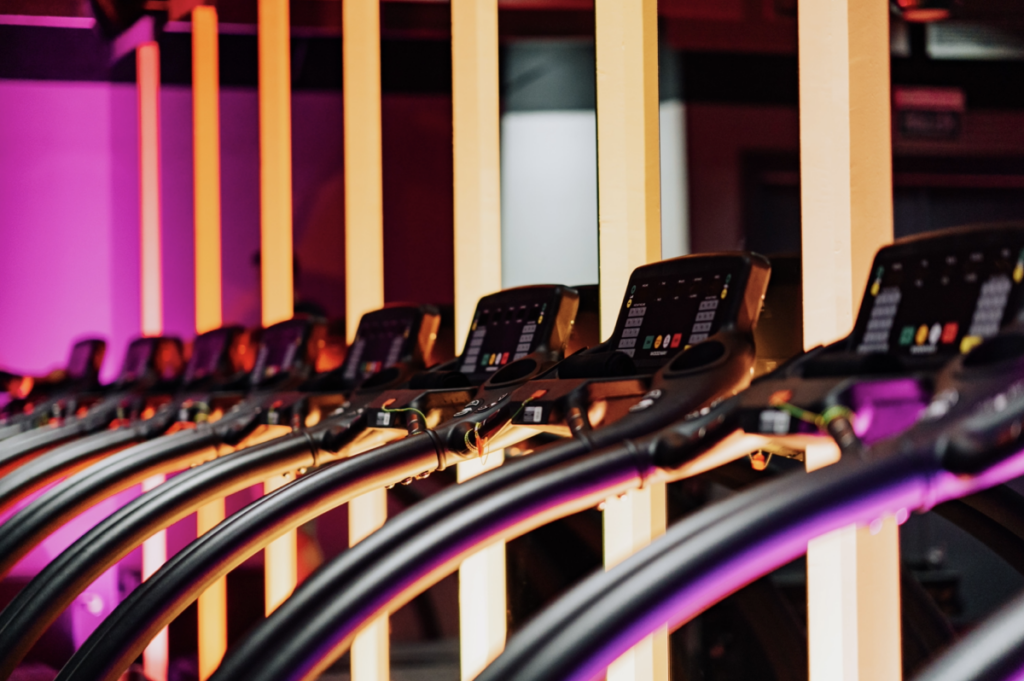
By contrast, Direct-View lighting is configured such that the light sources are visible to the audience. This creates a feeling of drama and energy, instilling a sense of urgency and excitement. The lights are deliberately on display, and they are part of the class experience.
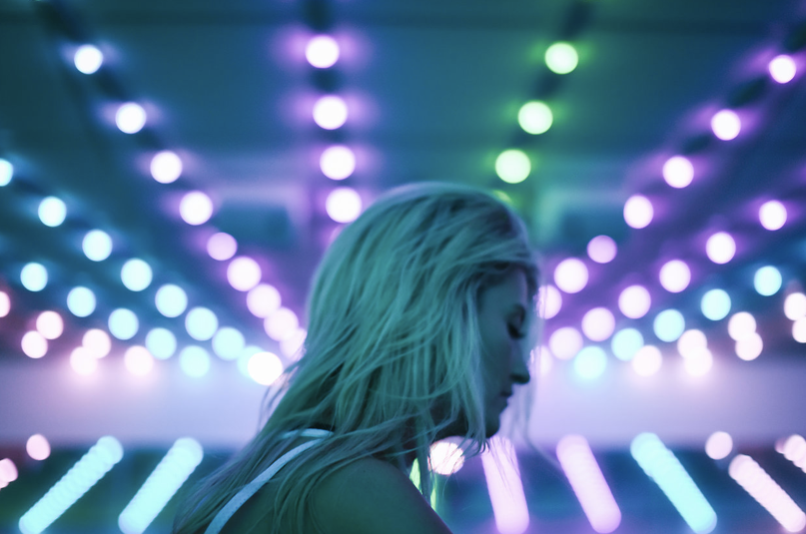
LED TERMS AND TECHNOLOGY
Modern LED light fixtures comprise light emitting diodes in the three primary colors – red, green, and blue – otherwise known as “RGB” LED’s. Additive, or light-based color mixing, comprises three primary colors. By combining and varying the intensity of these three colors, almost any color of visible light can be created.
The secondary colors of the spectrum are produced by mixing any pair of the three primaries. Combining red and green will result in amber (yellow), green and blue creates cyan (turquoise) and red and blue produces magenta (pink). This is known as the full color spectrum.
Although the color gamut from RGB LEDs is wide, there is a tendency for the white – theoretically a mix of 100% red, 100% green and 100% blue – to be cold and unflattering. To address this deficiency, LED manufacturers are increasingly making use of dedicated white (warm, neutral, and cool) and amber LED’s. This results in a much-enhanced color palette for sensual, skin-flattering effects.
Theoretically, when adjusting the three channels using a DMX (Digital Multiplex) controller, the actual number of colors achievable is 16.7 million. Although the human eye can only recognize a few hundred colors, this technology is wonderfully creative, flexible and – as a bonus – remarkably energy-efficient. LED’s emit a very narrow spectrum of light, and the material used in the semiconductor permits only a specific wavelength of light (one color) to be emitted from the diode. This means that LED’s produce more vibrant and saturated colors than conventional incandescent lamps with colored filters placed in front of the beam.
PLUG AND PLAY VS CUSTOM HARDWIRED
The term ‘Plug and Play’ describes a basic lighting system comprising a limited number of fixtures – usually RGB LED sources – that can be installed rapidly and operated very simply. A narrow range of stock effects are built-in to the fixtures, allowing them to be controlled via a “master-slave” type of playback. They are easy to set-up and run, but ultimately the number of effects is limited and can become predictable over time.
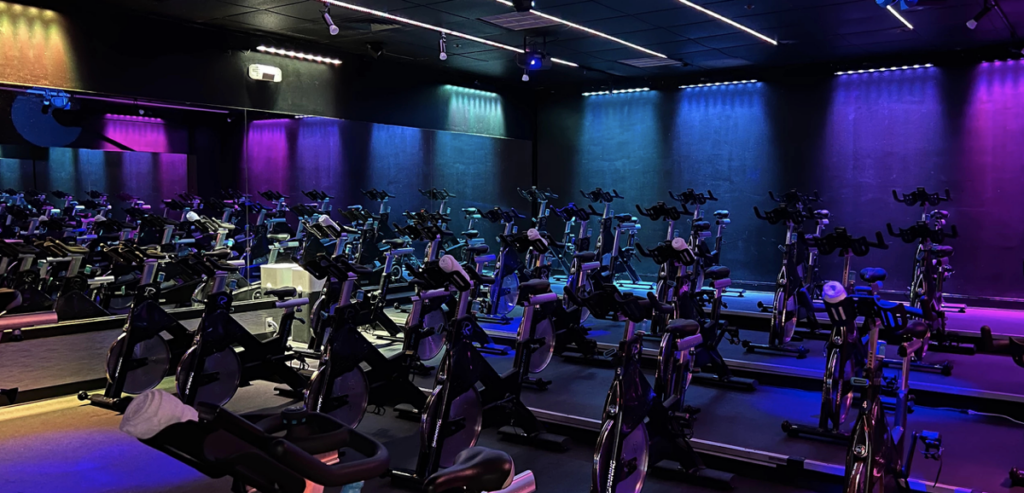
By contrast, a hardwired, custom designed lighting system is tailored to suit a specific space. In the best sense, the system itself is designed to be part of the buildout, and electrical drawings are included in the architect’s set of plans. The compact-size, high-output and low running temperature of the latest LED sources allow them to be woven into the space for a clean, minimalist aesthetic.
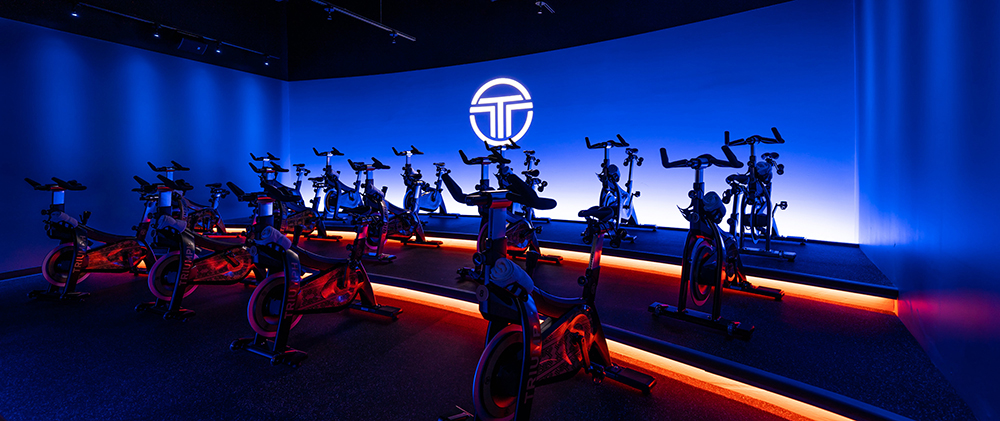
LIGHT CONTROLS
Some lighting professionals rely on Bluetooth connected Apps to handle lighting controls via an iPad, laptop, or standalone DMX controller. However, we favor a solution that provides instantaneous light changes which are accessed via a simple push-button interface. The software for authoring and programming light shows is invisible to the audience, and this allows the instructor to maintain eye contact whilst seamlessly segueing from one show to another.
Limited only by imagination, light shows can range from calm, slow color cross-fades and gentle washes to fast-paced, pulse-quickening kinetic sequences… all carefully crafted to suit a particular mood or style of music.
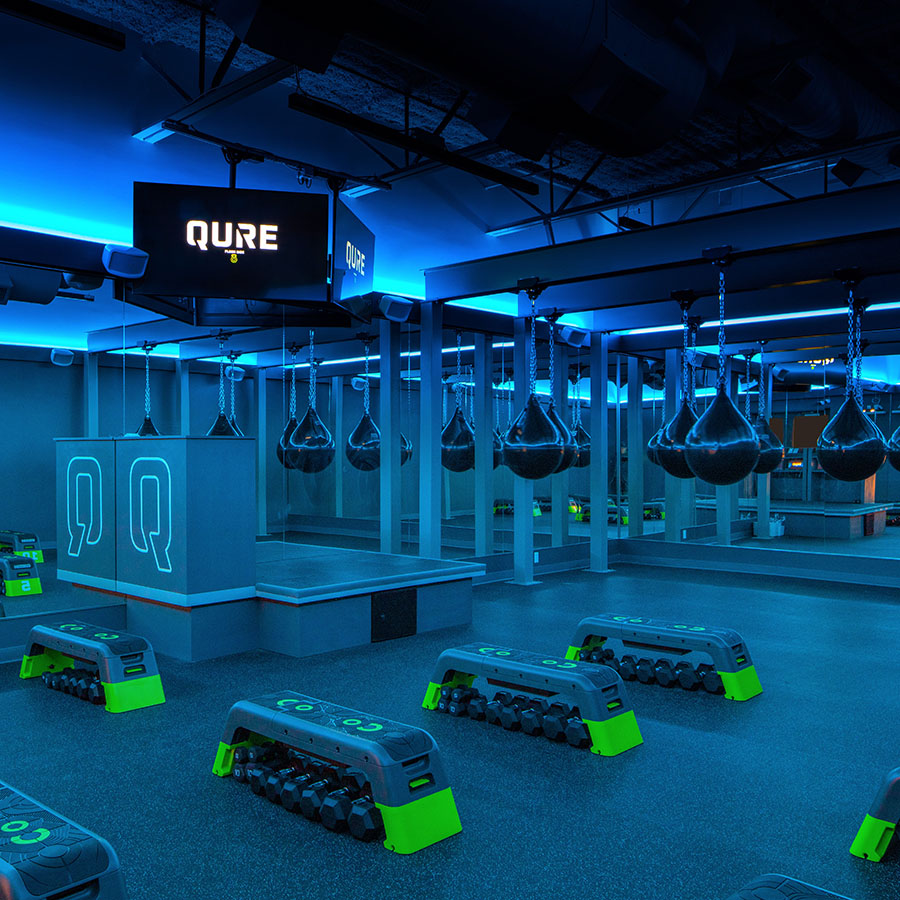
BLACK LIGHTS AND STROBES
While ultra-violet or ‘black lights’ can be exciting, remember that materials in dental crowns and veneers will react differently under these lights, and unflattering images are nobody’s friend. If black lights are used, limit them for specific moments in a class.
Similarly, the use of strobe lights, multi-faceted projectors, laser effects should also be used sparingly, if at all. Epileptic seizures can be triggered by strobe lights, and photosensitive epilepsy is a genuine concern for many studio and club owners.
To discover more about the creative application of feature lighting in BCD projects and to view their extensive architectural illumination portfolio, visit: www.light-partners.com
